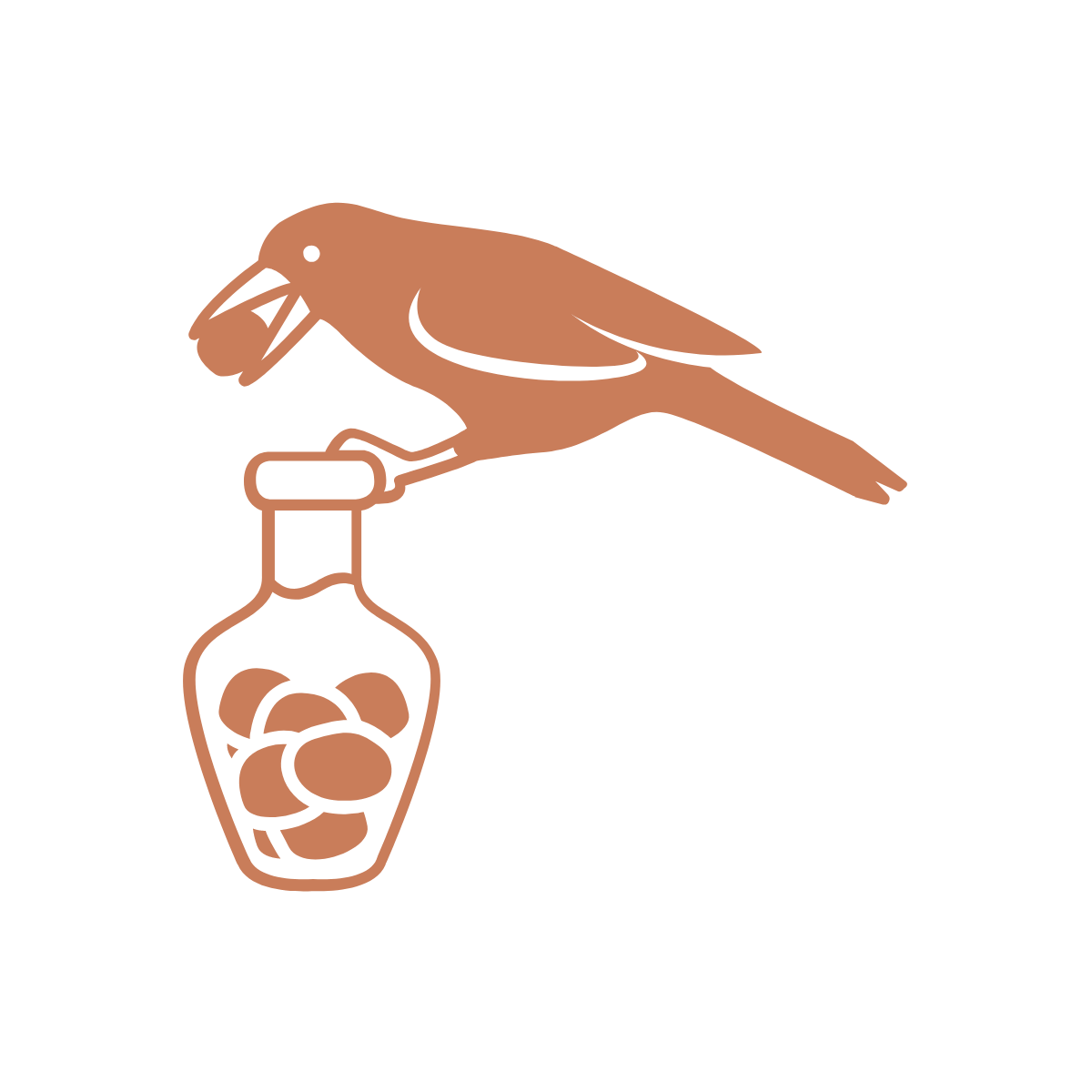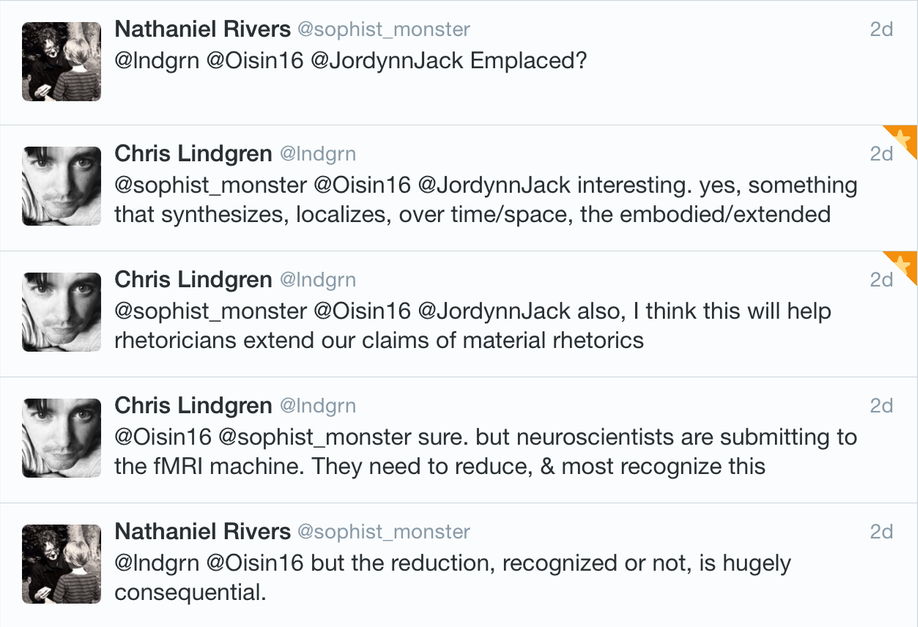In the Profession
As an academic, my work often extends beyond research and teaching and takes the form of service to my profession. I'll make that work more visible here.
Placement
As of this year (2017), I am Placement director. I created a Tumblr as a clearinghouse of resources for the job hunt: links, reflections, videos. I composed this short reflection on the work of placement:
Search. Market. Climate. Hunt. The words employed in describing our quest (there’s another one) for employment are multiple. They are each appropriate in some way. Oftentimes, jobs feel hidden. Other times, there are choices we can make. Many times, the whole thing feels bigger, less coherent.
I went with hunt for a few reasons. I like hunt because it suggests a kind of bounded activity in place of the boundless qualities of search. I prefer hunt to market because it suggests proactivity in place of reaction. Climate, unlike hunt, attends to everything all at once, and much of that is beyond our control. A search is always everywhere; markets merely happen; a climate is simply overwhelming.
Hunt, to me, contains within it the attitudes cultivated by these other terms, but in a more focused, productive direction. One has to search out prey, of course. The availability of prey, no doubt, is subject to what is available. The hunt clearly reflects the complex ecology of the places we inhabit. Beyond these attitudes, however, hunt suggests certain activities.
First and foremost, hunts are procedural: they require specific equipment, they occur at designated times of the year. Hell, there’s even a dress code for hunts. Second, hunts require attunement with both prey and environment: we have know where the prey lives, what will draw it out, how best to slay it, and, as always, know which way the wind is blowing. Third, the subjects (or objects) of the hunt resist, they hide, they are camoflaged.
While hunt is perhaps too adversarial, it focuses us in helpful ways. Sharpen your tools. Take aim. Focus your mind. Stand downwind.
The Ninth Triennial Conference of the Kenneth Burke Society
Along with Paul Lynch, I am the co-chair for The Ninth Triennial Conference of the Kenneth Burke Society, which will focus on attitudes toward technology and technology’s own attitudes.
Attitude mediates action and motion. Attitude is incipient action. Media have attitudes. Media are incipient. We act through media and media act through us. This dance of attitudes, both human and nonhuman, shapes action. Action is always in media res.
The conference will take place July 17-20 at Saint Louis University.
Rhetoric Society of America Conference 2014
The 16th Biennial Rhetoric Society of America Conference (#RSA14) in San Antonio, Texas, just recently concluded (May 26). The conference was, as usual, full of great papers on a range of topics in rhetorical theory, history, and instruction. Alongside the great panels and papers, there was a vast number of tweets (nearly 8,000) responding to, discussing, and extending the work of the panels. (The data displayed here was collected by Collin Brooke, who, among many things, is the Director of Electronic Services at RSA.)
Total number of tweets using #RSA14. "Impressions" are "the total number of times tweets were delivered to timelines" using this hashtag.
Not only were many scholars tweeting the event, but also many more were reading about the event through Twitter.
So that's the lay of the land for my own Twitter activity. I tweeted 98 times during the conference. The impression number for that time is around 30,000. Most of my tweets were either highlights from another scholar's talk or exchanges with fellow audiences members about talks (questions we'd like to ask, connections we think can be made, etc.)
While my numbers pale in comparison to some more prolific tweeters, I made an decent showing.
In addition to my own tweets, there were over a 100 tweets either about me or at me. These tweets were generally responses to my own presentation (more about that below) or exchanges with me during the presentations of others. These mentions reflect my Twitter presence across the conference.
A tag cloud displaying the top user mentions during #RSA14.
Now, beyond my individual Twitter activity, there was the Twitter presence of the roundtable I put together with my colleague Paul Lynch: "Bruno Latour and Rhetorical Theory," for which people generally used the #I9 tag (some used #I09 or no tag at all, such is the informal nature of Twitter). The panel, to which around 100 people came, was fairly visible across the Twitter network created by #RSA14. I have collected most of the tweets associated with this Roundtable here.
The number of tweets using the #I9 tag and the number of impressions created.
Another view of the same number put in the context of other hashtags used alongside #RSA14.
Here is a sample exchange to provide a sense of how Twitter can be used at conferences. This is an exchange during a talk by Jordynn Jack on the relationship between rhetoric and neuroscience. Marc Santos starts the conversation by summarizing a key point in Jack's talk. Chris Lindgren then adds a caveat to Santos' summary and, by extension, Jack's argument. I then chime in to bolster Jack's argument. The conversation then flows from there. ("ns" is short for neuroscience")
Part 1
Part 2
Part 3
Part 4
I don't have much to add here by way of analysis. I could probably talk at length about why people tweet what they do, when, and how much. I post this here, generally, to make present the other work I and my colleagues now do at conferences. This work is surely enjoyable and it provides a fair amount of personal and intellectual fulfillment, but it also adds to scope, presence, and, we hope, value of the conference: in this case, the Rhetoric Society of America's biannual conference. The RSA is my chief professional organization and home, and so the work I do at the conference is part of my service, however humble, to my profession.
KBJournal: The Journal of the Kenneth Burke Society
Paul Lynch and I were likewise co-editors of the KBJournal (2011–2013). Together, we have been working to shape the future direction of work on Kenneth Burke.
KBJournal takes as its mission the exploration of what it means to be "Burkean." To this end, KBJournal publishes original scholarship that addresses, applies, extends, repurposes, or challenges the writings of Kenneth Burke, which include but are not limited to the major books and hundreds of articles by Burke, as well as the growing corpus of research material about Burke. It provides an outlet for integrating and critiquing the gamut of Burkean studies in communication, composition, English, gender, literature, philosophy, psychology, sociology, and technical writing. In light of this, Kenneth Burke need not be the sole focus of a submission, but Burke should be integral to the structure of the argument.










